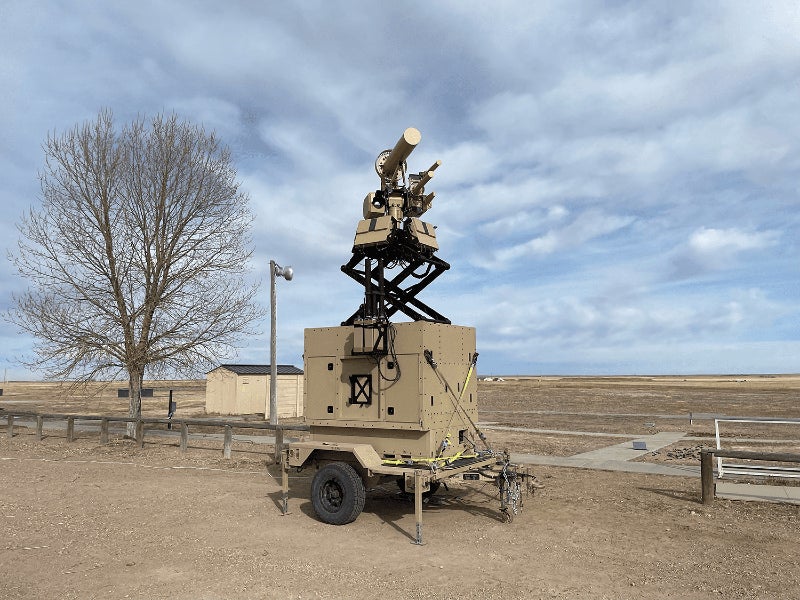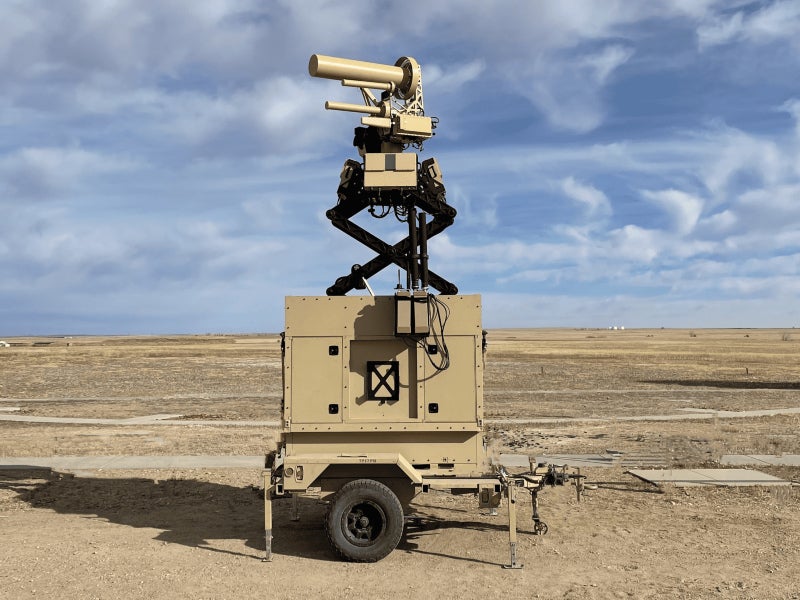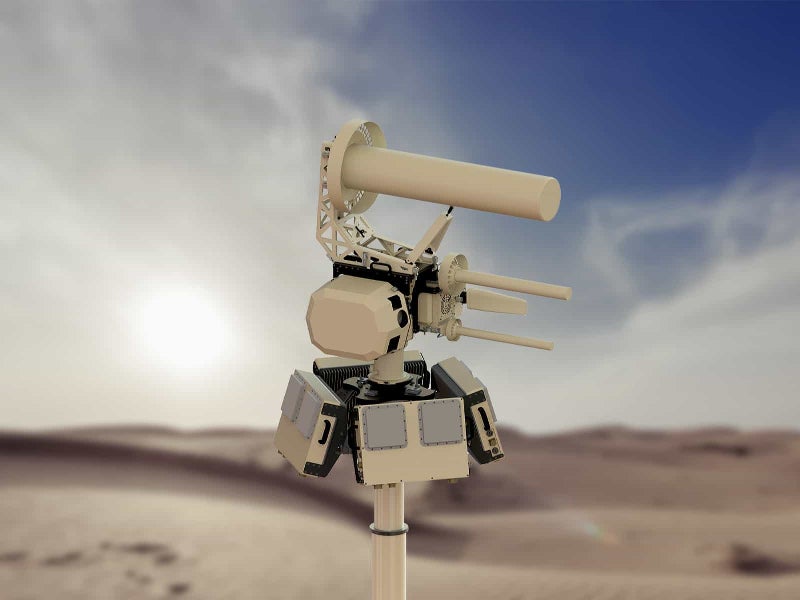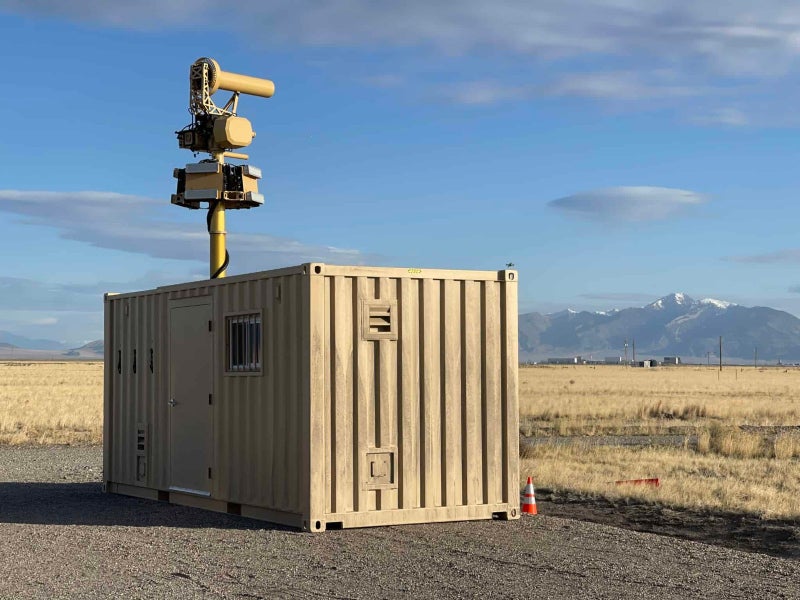Liteye Shield is a ground-based counter-unmanned aircraft system (C-UAS) developed by Liteye Systems (Liteye), a technology solutions manufacturer and integrator based in the US.
The C-UAS system can detect, identify, track and disrupt UAS or drone systems operating in the air, on the surface, on the ground, and in the electromagnetic spectrum.
It was unveiled in February 2021 as the next-generation C-UAS to defend against small UAS (sUAS) systems.
Liteye Shield development background
Liteye developed the new C-UAS solution to provide the US Department of Defense (DoD) with an autonomous kill chain system powered by artificial intelligence (AI) and machine learning (ML) to automatically detect, track and identify threats and enable decision making at machine speed.
The system is aimed at addressing the risk of drone swarms overwhelming the existing counter-drone systems. By employing AI and datalinks, drones can confuse a C-UAS defence system. They can also communicate and execute decisions at speeds unmatched by humans.
Liteye has also taken into account future threats involving autonomous drone swarms retargeting among themselves rapidly to overwhelm a C-UAS system.
Features of Shield C-UAS
Shield has been designed to protect critical infrastructure in multi-domain environments. It is a platform-agnostic system, which can be installed on several mission platforms such as fixed/semi-fixed, light vehicle/man-portable, mobile, and unmanned robotic vehicles.
It can be deployed to support a range of missions such as air and ground base defence, protection of convoy, offensive electronic attack, and non-military missions such as wildfire response, and event security.
The system is a fully autonomous kill chain that can handle most of the workload in a counter-drone operation, reducing the burden on the operator who needs to intervene only in the decision of whether or not to pull the trigger to engage the threats.
Radar systems onboard Shield
Shield is equipped with the Spyglass 3D radar, electro-optical (EO) and infrared (IR) tracking systems.
Developed by Numerica, Spyglass is a precision surveillance radar designed for C-UAS and short-range air defence. It features a rugged, solid-state design with low-power consumption and low-transmit power requirements.
It is equipped with command and control and AI software. Software-defined operating modes of the radar support the different mission needs of the customer.
The radar can detect and track small, autonomous UAS at a distance of more than 3,500m. It uses Ku-band phased array technology to provide high-precision measurements and enhance long-range targeting and classification performance.
Spyglass uses advanced signal processing algorithms and autonomy to provide increased detection range to enable the operator to see threats at a distance and respond faster.
Command and control
The system uses a networked, man-on-the-loop local command and control (C2), which provides multi-sensor information to an operating system with ML principles and 3D targeting to prepare for the activation of networked effectors.
The networked command and control system helps reduce manpower and ensures multi-mission/multi-domain capabilities of the C-UAS.
Numerica’s MIMIR™ C2 software suite is integrated into Shield. MIMIR stands for ‘mission interface for multi-domain interdiction and reconnaissance’. It supports the integration of sensors and defence capabilities to provide short-range surveillance, reconnaissance, and mitigation of threats.
Orders and deliveries
Liteye secured a multi-year contract worth $12.1m from the US DoD to supply its entire portfolio of multi-domain, multi-mission air base, surface, and ground defence systems in May 2022.
As part of the contract, Liteye will develop and integrate its entire suite of C-UAS and ground surveillance products for the detection, identification, and tracking of Group 1 and 2 UAS as well as ground defence capabilities.
The products will be integrated on fixed/semi-fixed, mobile and dismounted platforms to provide surveillance, targeting, as well as electronic and kinetic effectors to engage threats.
The company delivered the first Shield C-UAS to the counter-small unmanned aircraft systems (C-sUAS) high energy laser (HEL) programme of the US Army Rapid Capabilities and Critical Technologies Office (RCCTO) in April 2022.
The delivery was part of a multi-year contract worth $5.5m awarded to the company in October 2021 to integrate Shield into the HEL prototype effort, which aims to develop, integrate, manufacture, and test a prototype HEL system.
Liteye chose Numerica as its strategic partner in the development of the US Army’s C-sUAS HEL programme in October 2021.
The Shield payload will be combined with a HEL ‘hard kill’ capability and tested during operational tests.







